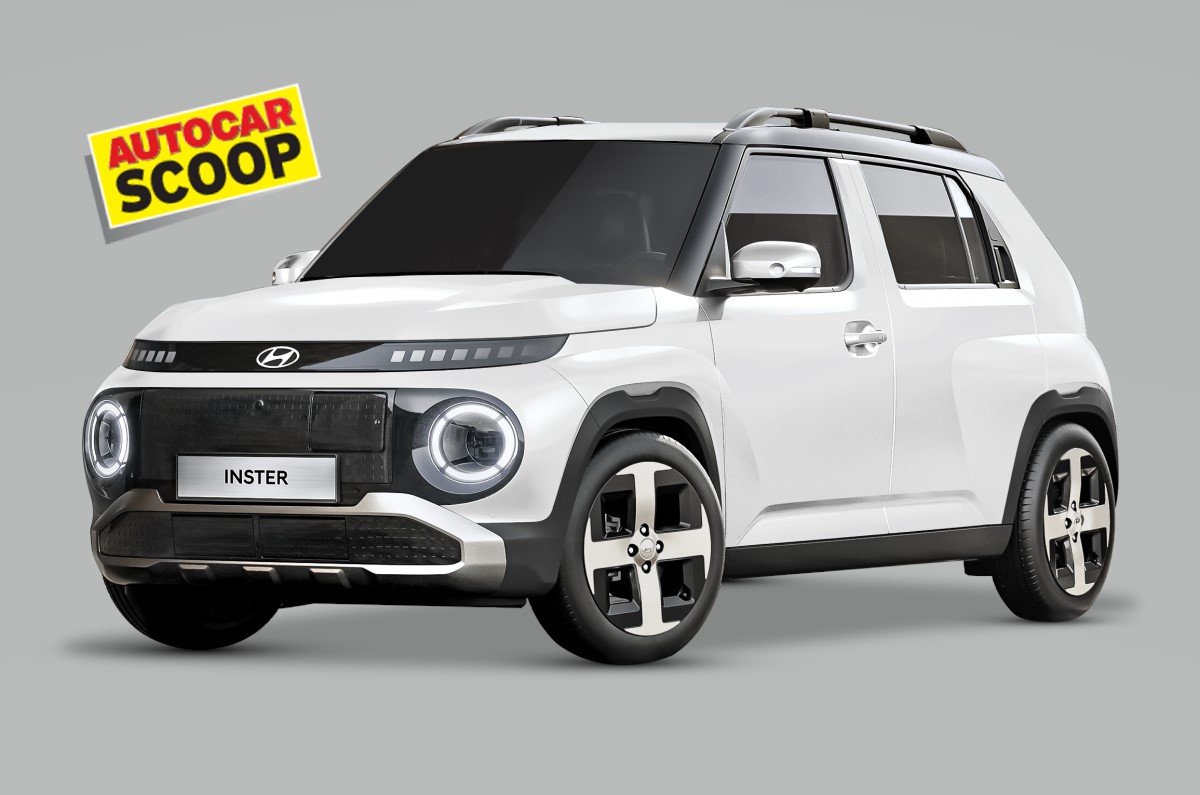
Facing stiff competitors from Tata Motors within the mainstream car market, Hyundai Motor India is ready to problem the homegrown carmaker actively within the quantity electrical automobile section, within the subsequent 12-24 months.
Our sister publication Autocar Professional has learnt that Hyundai India, as soon as it enters the midsize electrical SUV market with the Creta EV within the first quarter of 2025, has been given the go-ahead by its Korean mother or father to problem the Tata Punch EV.
- Hyundai’s Punch EV-rival launch anticipated in 2026
- Inster EV-based SUV to be made at Sriperumbudur plant
- Likely to get two battery pack choices
The compact SUV, codenamed HE1i, is scheduled to hit the roads within the second half of 2026. It shall be closely modelled on the Inster EV showcased by the corporate on the just lately concluded Busan Auto Show in South Korea.
Hyundai Motor India is adopting each ICE-derived electrical automobile structure (by way of the Creta EV), and the born-electric car platform primarily based on the worldwide and inexpensive E-GMP (Ok) platform (for the HE1i EV). The mannequin shall be produced on the firm’s Sriperumbudur manufacturing facility with localised batteries from Exide.
Hyundai Inster: a quick overview
The Inster relies on the Casper, which is bought in a number of markets abroad. The new small SUV is stretched by 230mm (over the Casper), of which 180mm has been added to the wheelbase to accommodate a beneficiant battery pack. At 3,825mm-long, the Inster is barely smaller than the Tata Punch EV at 3,857mm and the three,981mm-long Citroen eC3.
Two motor choices have been introduced in worldwide markets – a 97hp and a 115hp, with each making 147Nm of torque. Two NMC battery packs, a Standard 42kWh and a Long-Range 49kWh can be found with WLTP claimed ranges of 300km and 355km, respectively. The India-spec HE1i can be prone to get two battery again choices when it arrives.
In typical Hyundai trend, the Inster is nicely geared up with options like twin 10.25-inch shows for the instrument panel and touchscreen infotainment, ADAS, auto local weather management and a 360-deg digicam with blind spot monitoring.
Hyundai India EV manufacturing, gross sales targets
Between the Creta EV (26,000 models) and compact electrical SUV (65,000 models), Hyundai Motor India is planning an annual output of about 90,000 models. However, this additionally contains a good portion that is been earmarked for exports, particularly when speaking in regards to the smaller SUV.
The firm has dedicated Rs 20,000 crore for electrical automobile growth within the Indian market within the subsequent eight years. Hyundai, in its draft listening to crimson prospectus (DRHP) acknowledged that it plans to calibrate its EV technique and timeline in-line with market demand within the nation by launching applicable fashions. The DRHP acknowledged that Hyundai India will launch 4 new electrical autos, together with a mass-market mannequin. Its standard Creta EV shall be out there on the finish of the present monetary 12 months.
“We are following a transition strategy, starting with the launch of high-end, premium EVs. We plan to transition towards the mass market as the EV market and ecosystem sales increase in India. In line with this, we aim to launch four EV models in the future, including the Creta EV, in the last quarter of fiscal 2025,” the corporate stated.
While the Creta EV and compact EV have been finalised, an EV model of its Venue compact SUV and a Grand i10 Nios-based EV are being thought-about.
An e-mail despatched to Hyundai Motor India is but to elicit any response.
xEV portfolio could possibly be localised for India
The South Korean carmaker was among the many first to introduce an electrical automobile in India when it launched the Kona Electric in 2019, with the Ioniq 5 following go well with. However, since these had been imported, the corporate wanted extra numbers. Hyundai India believes that its South Korean mother or father firm’s diversified xEV portfolio, which incorporates battery EVs, hybrid EVs, plug-in hybrid EVs, mild-hybrid EVs, and gas cell EVs, shall be a “key enabler” for EV methods in India.
“We believe that our experience in developing dedicated, localised ICE models will help us leverage their know-how to develop localised xEV models for the Indian market,” the DRHP be aware added.
Tata Motors sells about 75,000 EVs yearly with a portfolio of 4 autos (Tiago, Tigor, Punch, and Nexon). The firm is sprucing up its choices with the brand new Curvv, Harrier EV and Sierra EV launch within the subsequent 12-24 months.
Despite launching the Punch EV earlier this 12 months, Tata Motors has skilled a slowdown in month-to-month volumes. While Hyundai will pose recent competitors to Tata Motors, the latter is eager on new gamers getting into the market as it should assist broaden the fledgling electrical automobile market in India.
Tata Motors, a frontrunner within the electrical automobile car area with a market share of over 75 %, has steadily inched nearer to Hyundai Motor India for the quantity 2 place, with simply 30,000 models separating each corporations. If the transition to EVs gathers momentum, a recent battle within the EV area between Hyundai and Tata Motors might be the differentiator sooner or later for the quantity two place within the quick rising Indian passenger automobile market.
Also see:
7 new Hyundais incoming, Audi Q6 e tron assessment, and extra: Autocar India July 2024
Hyundai Venue N Line vs Toyota Taisor comparability video
Hyundai Alcazar will get as much as Rs 85,000 off forward of facelift launch








